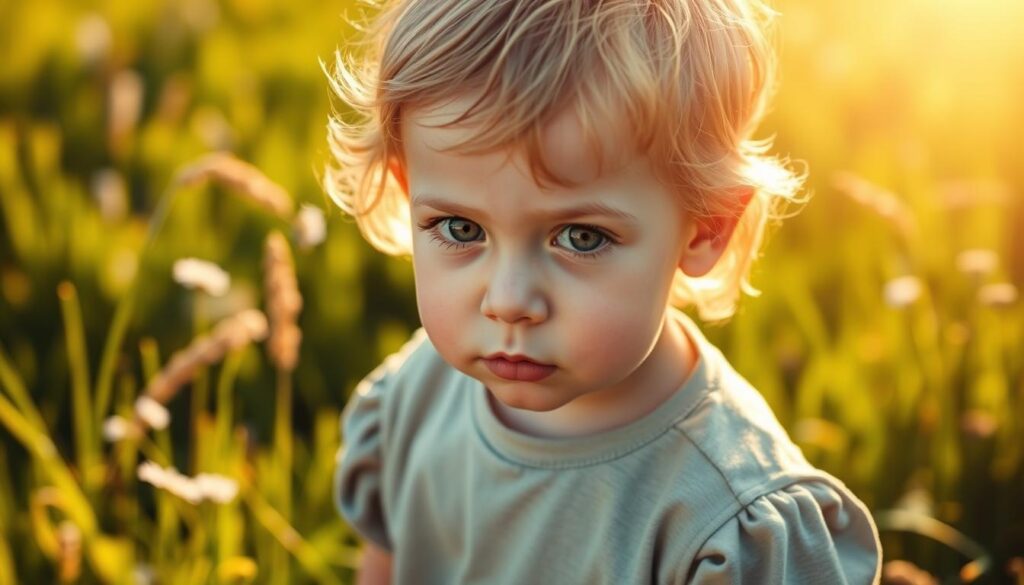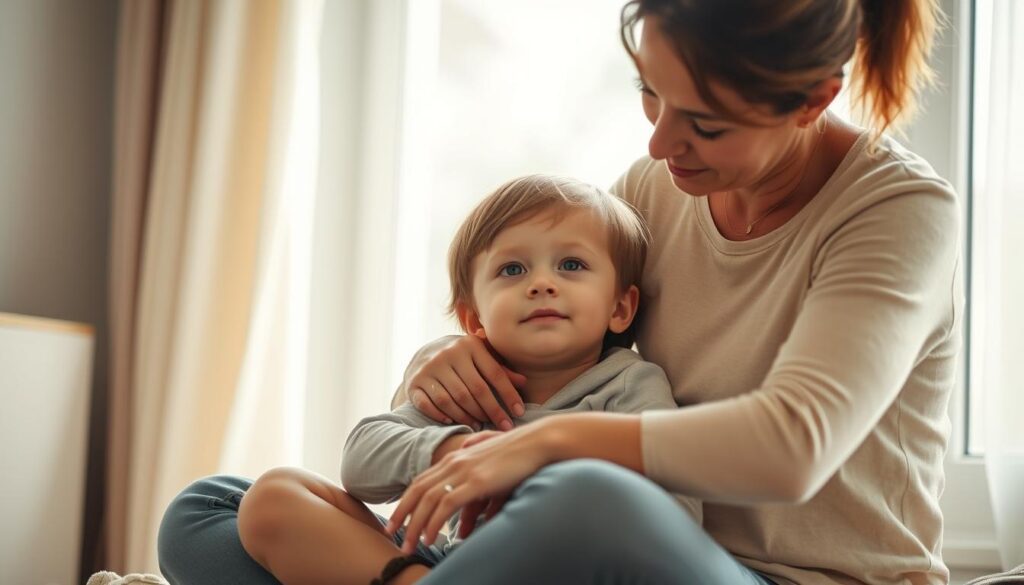For centuries, parents have been surprised when their young children talk about memories from “before they were born.” These aren’t just vague feelings. They are specific memories of names, places, and events that a child shouldn’t know. When a child starts sharing these stories, families often find themselves in new territory.

In places like India and America, thousands of cases of children remembering past lives have been recorded. These kids usually start sharing their memories between ages 2-5. They describe their former homes, families, and even how they died. Their stories are filled with emotional details and specific facts that can be checked through research.
What’s striking is how convinced these children are. They aren’t just pretending. Many become upset or confused if their “other family” isn’t recognized. Some even speak languages they’ve never learned or show skills they’ve never had in their current life.
This phenomenon has caught the attention of both spiritual believers and scientific researchers. It creates a unique space where faith and science meet to understand human experiences. Whether you’re a parent dealing with this or just curious about life’s mysteries, exploring this topic requires an open mind and critical thinking.
Key Takeaways
- Children who recall past lives typically share these memories between ages 2-5
- These memories often include verifiable details about places, people, and events
- The phenomenon has been documented across various cultures worldwide
- Children may display knowledge, skills, or phobias connected to their past life claims
- Both scientific researchers and spiritual traditions have studied these cases
- Most children stop talking about past lives as they grow older
Understanding the Phenomenon of Past Life Memories in Children
Research into past life memories in children is fascinating. These memories often pop up without warning. Parents are surprised when their kids talk about “another family” or a past life.
How Common Are These Experiences?
Childhood past life memories are more common than you might think. About 2-5% of kids worldwide remember past lives. In places where reincarnation is believed, this number jumps to 15% in countries like India, Thailand, and Lebanon.
Typical Age Range for Past Life Recollections
Children usually start sharing these memories between 2 and 5 years old. This is when they start to talk more. By 7 or 8, these memories often fade as they learn more about the world.
How These Memories Usually Manifest
Children show past life memories in different ways:
- Casual statements like “When I was big before” or “My other mother had black hair”
- Detailed knowledge of places, history, or technical stuff they shouldn’t know
- Specific fears linked to past traumas (like fear of water or heights)
- Night terrors that seem to relive past traumas
- Birthmarks or defects that match wounds from their past life stories
Children often seem very sure when talking about these memories. They get upset when adults don’t believe them. Parents are often shocked by how matter-of-factly their kids discuss these past events.
Signs Your Child Who Remembers Their Past Life May Exhibit
Seeing signs of past life memories in kids can be both exciting and confusing for parents. These memories usually start to show up between ages 2-5. This is when kids start to talk but haven’t yet been shaped by what society expects.
Children who remember past lives often act differently than others. They might talk about “another family” with a lot of confidence. They might also want to be called by a different name.
Look out for these common signs that might mean your child remembers past lives:
- Describing detailed events or places they’ve never visited
- Displaying knowledge or skills they haven’t been taught
- Having recurring dreams about specific locations or people
- Exhibiting unusual phobias connected to specific scenarios
- Using phrases like “when I was big before” or “in my other house”
- Showing emotional reactions when encountering certain objects or locations
- Demonstrating preferences that seem misaligned with their current life
These signs often pop up in everyday talks, not as made-up stories. A child who remembers their past life usually shares these memories without seeking attention. They don’t go into more details when asked.
If your child shows these signs, remember it doesn’t mean they have a psychological problem. Many kids naturally stop remembering these things as they get older. This happens even if parents don’t believe them or don’t know how to react.
Famous Case Studies of Children with Past Life Memories
Some of the most striking evidence of reincarnation comes from children’s past life stories. Young children share memories that are impossible for them to know normally.
The James Leininger Case
James Leininger was just two years old when he started having nightmares about planes crashing. He shared details about being a World War II pilot named James Huston. His parents found veterans who confirmed his memories.
Shanti Devi: One of the Most Documented Cases
In 1930s India, Shanti Devi was four when she started talking about her “other life” in Mathura. Her details were so convincing that Mahatma Gandhi set up a commission to investigate. In Mathura, Shanti found her former home, recognized her husband, and identified objects and people she had never seen.
Cameron Macaulay and His “Other Family”
Scottish boy Cameron talked about his life on the remote island of Barra. He described a white house with three bathrooms and a black car. When his mother took him to Barra, they found a house that matched his description. Cameron’s case adds to the evidence of reincarnation that scientists study.
The Science Behind Reincarnation Claims
Looking into children’s past life memories is a blend of psychology, medicine, and studying consciousness. Many think reincarnation is just a spiritual idea. But, some researchers have studied it with serious science.
Dr. Ian Stevenson’s Research at the University of Virginia
Dr. Ian Stevenson’s work is key in studying reincarnation. He worked at the University of Virginia and looked at over 3,000 cases from 1961 to 2002. He checked if kids’ stories matched historical records and if birthmarks matched wounds from past lives.

Stevenson changed how we think about reincarnation by using medical science. He talked to witnesses, looked at medical records, and made detailed studies. His work is still unmatched for its depth and fairness.
Current Scientific Studies and Findings
The University of Virginia’s Division of Perceptual Studies keeps up the research under Dr. Jim Tucker. They use new tech and methods to study reincarnation. They also look at genetics and how it might affect memories from past lives.
“The evidence for reincarnation isn’t proof in the sense that we can prove a law of physics, but it’s substantial enough that it deserves serious investigation rather than dismissal based on current paradigms.” – Dr. Jim Tucker
Alternative Psychological Explanations
Some think past life memories can be explained by psychology. They say kids might remember things from books or TV. Others think some kids are just more creative. Cultural beliefs might also play a role.
False memories and suggestions from parents could also be reasons. But, they can’t explain all the cases, like when kids meet strangers or speak languages they shouldn’t know. Scientists keep looking at these mysteries with both doubt and interest.
Cultural and Religious Perspectives on Children’s Past Life Memories
Across the globe, families see past life claims from children in different ways. In Eastern traditions like Hinduism and Buddhism, reincarnation is seen as a natural spiritual process. Children who talk about past lives are often seen as confirming these beliefs.
In Western religions, like Christianity, Judaism, and Islam, things are more complex. These teachings usually say we only live once. Yet, many Western parents still listen with curiosity to their children’s stories.
Studies show that how often children talk about past lives can depend on their culture. For example, kids in India share these stories more than those in Europe or North America. This makes us wonder if culture shapes these experiences or just how open children are to sharing them.
“The stories children tell about past lives reflect the intersection of individual experience and cultural narrative. What remains consistent across traditions is the remarkable detail and emotional conviction these young narrators bring to their accounts.”
Indigenous traditions also have their own views on reincarnation. They see it as part of a spiritual circle that connects all generations. For many tribal communities, this idea ties ancestors, living people, and future generations together.
How Parents Can Respond to a Child Claiming Past Life Memories
When your child talks about living a life you know they never did, it can be confusing. Parents often feel unsure about how to support children with past life memories. The most important thing is to be open while also keeping things stable.

Creating a Supportive Environment
Listen without judgment when your child shares about past life experiences. Don’t ask questions that might influence their story. Instead, say things like “Tell me more about that” or “That’s interesting.”
Let your child talk at their own speed. Some kids casually share about past lives, while others feel deeply connected. Your calm acceptance helps them feel safe as they process these memories.
When to Seek Professional Guidance
If past life memories upset your child, disrupt their sleep, or affect their daily life, seek help. Look for mental health professionals who are open-minded about unusual childhood experiences. They should not dismiss or focus too much on reincarnation.
Documenting Your Child’s Claims
Keep a simple journal of what your child says about their past life. Note the dates, details, and context of their memories. This helps track patterns and is useful if you consult with experts later.
Many children naturally grow out of these memories by age seven. Your main job is to provide emotional security as they deal with these unique experiences.
Differentiating Between Imagination and Genuine Past Life Recollections
Parents often wonder if their child’s stories about “when I was big before” are real or just made-up. While kids love to use their imagination, some stories might be more than just fantasy.
Common Characteristics of Authentic Cases
Studies on past life memories show some key signs of real experiences. Kids who might have had past lives share their stories without being asked. Their stories stay the same over time and include details that can be checked out.
These kids often feel very strong emotions when talking about their past lives. They might know things they shouldn’t know, like historical facts. Birthmarks that match wounds from a past life are seen as strong proof of reincarnation.
The Role of Fantasy and Pretend Play in Childhood
Imagination is crucial for kids, helping them deal with feelings and learn about the world. Many kids have imaginary friends or make up stories. These stories usually change a lot and include things from books, TV, or family talks.
When looking at a child’s claims of past lives, see if they started after being exposed to similar ideas. The big difference is in how consistent and detailed the stories are. Imaginary play usually doesn’t have the same depth as real past life memories.
The Impact of Past Life Memories on a Child’s Development
When kids talk about past lives, parents often wonder how it affects them. Studies show that most kids handle these memories well. They grow up with wisdom and maturity that’s surprising for their age.
Childhood memories of past lives can explain strange behaviors. For example, a child might fear water because they drowned before. Or, they might show a talent for something they never learned, like playing piano.
These memories can bring both good and bad to a child’s life. On the plus side, they can be very empathetic and emotionally deep. But, they might also struggle to understand who they are today.
| Positive Impacts | Potential Challenges |
|---|---|
| Advanced emotional maturity | Confusion about current identity |
| Unusual compassion or wisdom | Anxiety related to past trauma |
| Unexpected talents or skills | Feeling torn between past and present |
| Early spiritual awareness | Difficulty relating to peers |
Addressing Skepticism and Criticism
The study of past life claims gets a lot of criticism from scientists. Many say there are simpler reasons for these claims that don’t need belief in the supernatural. Looking at both sides helps us understand this interesting topic better.
Common Arguments Against Reincarnation
Some people doubt past life claims for good reasons. They say kids might be influenced by their parents’ questions. Others think it could be cryptomnesia, where kids remember something but forget where they got it from.
Our brains also like to connect unrelated things, which can lead to false memories. Cultural beliefs play a big part too. Places where reincarnation is believed in more often report more cases. This might be because of what people expect to happen.
Memory is not always reliable. Every time we remember something, it can change. This makes it hard to trust what we think we remember.
How Researchers Address These Concerns
Researchers have come up with strict ways to check these claims. Dr. Ian Stevenson created methods to tell real cases from made-up ones. They record what kids say before they try to verify it, focusing on specific details that are hard to guess.
They also look at cases from different cultures, even where reincarnation isn’t believed. Finding similar patterns in these places helps prove it’s real. Many studies look at physical marks or birthmarks that match wounds from past lives. This is evidence that goes beyond just memories.
| Skeptical Argument | Research Response |
|---|---|
| Parental coaching | Documentation before verification |
| Cultural suggestion | Cross-cultural case studies |
| Cryptomnesia | Focus on verifiable details unknown to child |
Conclusion: Embracing the Mystery While Supporting Your Child
As we wrap up our look into children’s past life memories, it’s clear they’re a fascinating mystery. Science is still trying to figure out these memories, but we might not get all the answers. What’s key is how we, as parents and caregivers, support the child who remembers their past life.
Being compassionate and curious is a great lesson. Instead of looking for “proof,” we should listen carefully, record without influencing, and focus on the child’s emotional health. These memories, whether from past lives or not, are very important to the child.
Most kids will either grow out of these memories or find a way to deal with them. By being patient, understanding, and respectful, we help them feel heard and understood. This way, they can handle this amazing part of their young lives.
FAQ
How common are children’s past life memories?
Studies show that children’s past life memories are more common than many think. They are most common in kids aged 2-5. By age 7 or 8, these memories often fade as regular memories grow stronger.
How do these memories typically manifest in children?
Kids who remember past lives might talk about “another family” or home. They might know things they haven’t been taught. They could have dreams about specific places or people.
They might also show unusual fears or behaviors. Or they might say things like “when I was big before.” These signs usually come up naturally in conversation, not as made-up stories.
What are some famous case studies of children with past life memories?
Famous cases include James Leininger, an American boy who remembered being a WWII fighter pilot. His memories amazed historians. There’s also Shanti Devi from India, whose claims were looked into by Mahatma Gandhi’s committee.
And then there’s Cameron Macaulay from Scotland. He described his “other family” on Barra Island in great detail, which was verified.
How do researchers investigate children’s past life claims?
Dr. Ian Stevenson at the University of Virginia documented over 3,000 cases. He checked children’s statements against historical records. He also looked at birthmarks that matched fatal wounds.
Today, Dr. Jim Tucker continues this work. He uses new methods and looks at other possible explanations too.
How do different cultures and religions view children’s past life memories?
In places where reincarnation is believed, like in Hinduism and Buddhism, these memories are more accepted. In Western religions, they are often seen as conflicting with afterlife teachings. The culture can greatly influence whether kids share these memories.
How should parents respond to a child claiming past life memories?
Parents should be supportive and listen without judgment. Let the child share at their own pace. Avoid dismissing or focusing too much on the memories.
It’s good to document what the child says. If the memories cause distress, getting professional help might be a good idea. Most kids grow out of these memories without lasting problems.
How can we differentiate between imagination and genuine past life recollections?
Real cases often show consistency and emotional depth. They involve knowledge that’s hard to explain and specific, verified details. But, kids’ imagination can sometimes seem like “past life talk.” It’s more important to support their development than to figure out the truth.
How might past life memories impact a child’s development?
Most kids handle these memories well, but sometimes they can cause issues. These memories might make a child seem more mature or compassionate. They can also shape their worldview and spiritual beliefs.
How do researchers address skepticism and criticism about past life memories?
Critics often question coaching, memory flaws, and the lack of a known memory transfer method. Researchers try to avoid media exposure and document statements before verifying them. They study cases from different cultures to address skepticism.
They explain why some cases are still compelling, even with alternative explanations. They value healthy skepticism but also share the reasons behind their findings.
